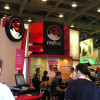The Ultimate Linux Box 2001: How to Design Your Dream Machine
Five years ago, in a Linux Journal article I wrote in 1996, I developed a recipe for an elegant and economical Linux box. I used this as motivation for a discussion of what makes a good, balanced system design. The article became one of the most popular in LJ's history, so the editors have invited me back for a second round.
This time, however, we're going to involve more people than just me. LJ recruited Rick Moen, author of some well-known FAQs on modems and other hardware topics, to assist with this article. Daryll Strauss, the man behind the famous all-Linux rendering farm used in the movie Titanic, also contributed sage advice from his background in graphics and extreme data crunching.
We're also going to examine system architecture from a different perspective. Instead of going for economy we're going to go for the maximum crunching power. This time, we're going to ask not what the most cost-effective plan is, but how to get the absolute highest performance out of hardware we can live with.
"Hardware you can live with" means a machine that is stable, easy to troubleshoot and inexpensive to maintain after the original money-is-no-object build phase. It should be small and low-maintenance enough to live beside your desk, as opposed to (say) some liquid-cooled monstrosity that needs to be nursed by a full-time technician. It should be, in short, a PC--an extraordinary gold-plated hand-tuned hotrod of a PC, but a PC nevertheless. Another important aspect of livability is the level of emitted acoustic noise and heat; we'll pay attention to minimizing both as we design.






































































